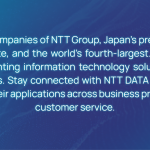Everyone knows that RPA is a software tool that helps users optimize processes efficiently. It allows businesses to perform repetitive tasks logically. But if we do not have the right choice and way of operating RPA, the software robot will not bring the expected productivity. The following article of WinActor will introduce you to 4 best-operating methods to implement RPA.
Ensure an integrated, coherent vision of the road towards RPA deployment
Center robot excellence (CoE) is necessary to provide you with important information and data before applying RPA in practice. At the same time, it can also include a journey of automation that extends beyond the first steps of RPA implementation. In addition, CoE is a multidisciplinary team including C-suit, marketing, IT leader, and departmental representatives.
CoE Robotics Center of Excellence focuses on the development of automation projects. Therefore, it will provide all the important information that helps businesses to orient specific automated processes. Besides, CoE not only plans short-term for RPA, but it also supports enterprises in long-term planning. It ensures consistency and maintains automation standards throughout the self-actualization process. From there, businesses will have better ways to deploy RPA expansion.
CoE promotes the assimilation of RPA software robots into business workflows and employee perceptions. Therefore, having an excellent robotics center is the best method for RPA implementation. CoE helps you coordinate change management and accountability.
Do not lose track of complementary technologies to RPA
When artificial intelligence combines with some traditional automation tools, it will make processes more and more complex. The more complex a process, the higher its automation potential, requiring a combination of RPA and AI.
Some examples of complex processes:
- Monitoring, internal communication
- Customer inquiry and consultation
- Risk monitoring system
- Personalized financial advice
These complex processes will benefit from the simultaneous use of RPA with other technologies: artificial intelligence, business process management software, or machine learning. In addition, the incorporation of technologies is also considered the RPA Center of Excellence. Because it acts as an interface with other digital technologies of the business, for example, chatbots or advanced analytics.

Make a savvy choice of the business processes to be passed on to software robots
Choosing the right RPA tool
Before applying for RPA, you should answer these questions about your business:
- How is the process structured?
- Which departments are software robots applied to?
- Are RPA tools right for your business?
At that time, you will have certain knowledge and orientation for your business before implementing RPA because RPA will be a potential candidate for the business if the company understands and knows how to approach it.
Target automation with RPA robot robots
After you answer all the questions about RPA, you can apply RPA to your process. CoE will help your business have process orientation, long-term goals in the future. You will base on the following factors to choose the right RPA tools:
- The process ensures continuity and regularity
- Massive workload
- Process stability
- Investment costs, savings, desired ROI
- Exceptions to which manual labor is common
You will then be able to choose which processes will be compatible with which RPA tools. At the same time, it will help the software robot operate more efficiently, significantly impacting the acceleration and amplification of return on investment. Plus, it’s easier to prioritize the most relevant use cases with the selection factors above to achieve your business goals.
Manage a fruitful collaboration between IT and business departments
For the RPA project to develop successfully, businesses and software providers need to coordinate with each other. Each unit will take on a different task, which will create a perfect automation process when combined.
Businesses or business people are the ones who know their processes best and are responsible for their performance. Enterprises can come up with effective ideas, goals, and choices about automation processes. At the same time, they also manage the behavior of the software robot to achieve set financial goals.
In addition, the software company will be responsible for converting business ideas into specific RPA processes. They focus on delivering software that fits the company’s technical infrastructure. At the same time, the IT team is also responsible for ensuring confidential data for the company, also known as network security. Because RPA will directly work on systems containing enterprises’ data, it will be very easy for elements to be appropriate and appropriate if the information is not secure.
Therefore, the IT team is an indispensable factor in implementing Robotic Process Automation. Because without them, businesses will not be able to set up an optimal and effective initial process. To a larger extent, a later extension of the RPA process will require a complete initial process with few exceptions. In addition, the right bot updates and application changes also need businesses, and IT teams to work simultaneously to achieve efficiency and goals as soon as possible.
Read more: Why do RPA implementations fail?
Benefits of operational approaches to RPA implementation
Best practices for implementing RPA to help businesses take full advantage of software robots’ features and benefits. It will allow your business to make the most of its knowledge resources. That means your employees won’t have to do boring tasks. They will be moved to more creative and valuable positions. Then, businesses will achieve the desired ROI and do not need to worry about process optimization problems.
At the same time, the application of effective RPA operation methods is of great significance in expanding the process for software robots. The scalability of bots allows businesses to be more flexible and adapt well to current needs without being constrained by previous workload plans.
Therefore, implementing RPA according to best-operating practices will bring many benefits to businesses. It saves businesses time and money. Since the software robot can do it without setting up an API, the user interface (IU) is friendly, and the process setting mechanism is simple.
Read more: Top 12 benefits of RPA (Robotic Process Automation)
Conclusion
Hopefully, through this article, you will have an overview of the 4 best practices for RPA implementation. To have an effective RPA automation process, we need first to understand our system. At the same time, you also need to have certain knowledge about software robots to assess the relevance of RPA to the business accurately.

WinActor is an RPA software solution by NTT DATA Corporation to help businesses master technology, create breakthroughs in the digital age 4.0.





